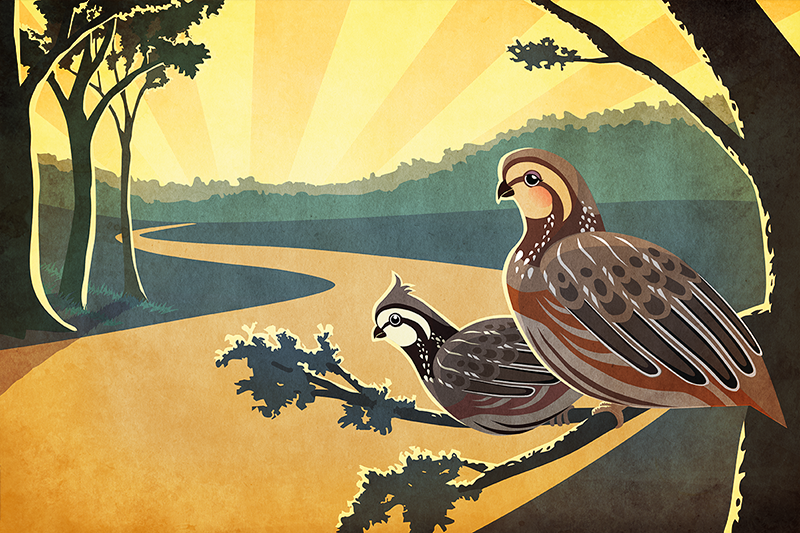Where have all the bobwhites gone? Genome project looks for answers

Illustration: Division of Research
The iconic bobwhite quail, a favorite among hunters and wildlife enthusiasts alike throughout the United States, has literally flown the coop. Its numbers have been decreasing alarmingly for decades, but a groundbreaking project led by a team of Texas A&M University researchers could improve our understanding of historic and future bobwhite population trends.
Assistant Professor Chris Seabury and his research associates at Texas A&M’s College of Veterinary Medicine & Biomedical Sciences have completed the first-ever draft genome assembly for a wild bobwhite quail. Their work is published in the current issue of the scientific journal PLOS ONE.
“By sequencing and assembling the bobwhite quail genome, the team produced the most comprehensive resource currently available for cutting-edge interdisciplinary research in the bobwhite,” Seabury says.
There appears to be no single or specific reason for the decline. Loss of natural habitat, changes in land use, pesticides, the potential for bird diseases, and even climate change have all been mentioned, but no definitive explanation has been discovered for the quail decline.
“We now have a formal resource for studying the bird and identifying new or perhaps even more specific reasons for its serious decline,” Seabury said. “Now we can peel back new layers of science to thoroughly look at many different levels of the quail problem.”
News coverage:
- “A&M research could stop bobwhite quail’s alarming decline,” Houston Chronicle
#TAMUresearch

